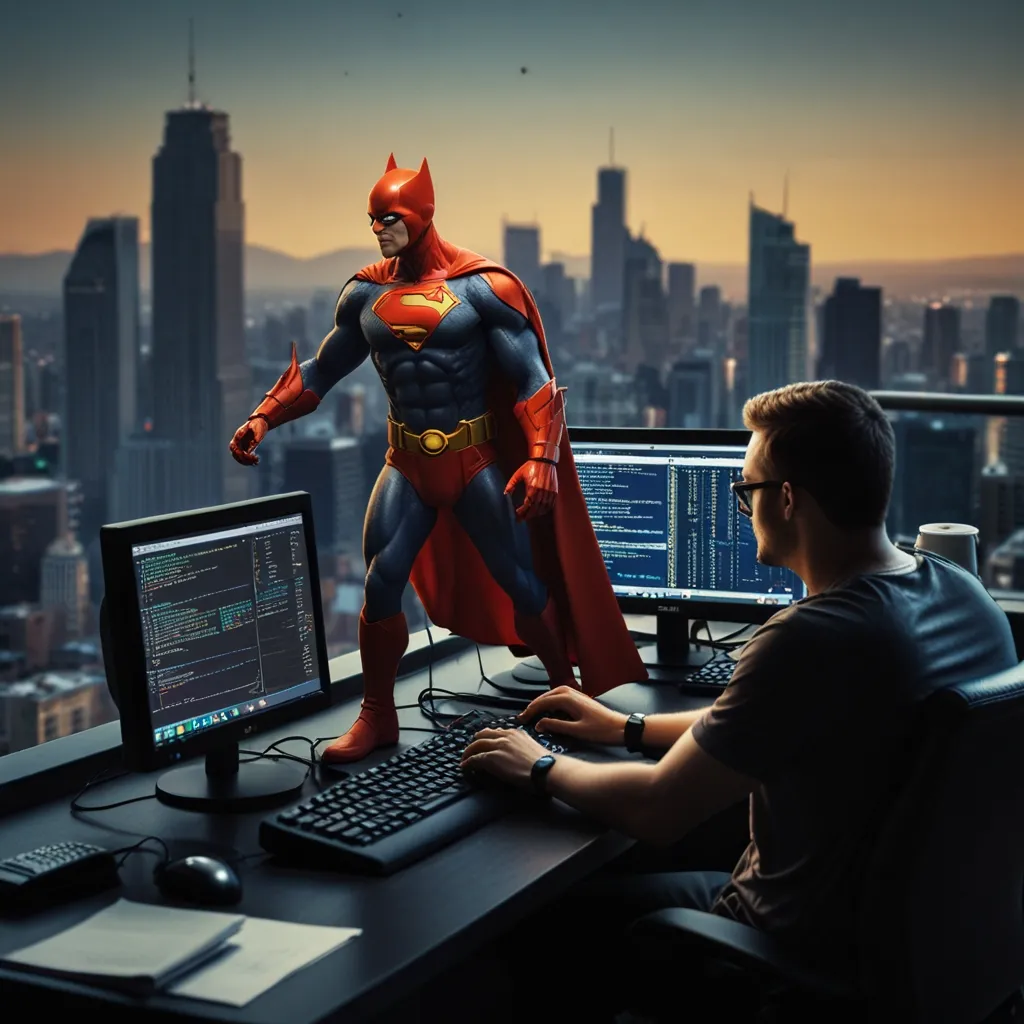Blockchain and IPFS are revolutionizing the way we think about secure voting systems. As a tech enthusiast, I’ve been fascinated by the potential of these technologies to ensure transparency and integrity in elections. Let’s dive into how we can implement a secure voting system using these cutting-edge tools.
First things first, let’s talk about blockchain. It’s like a digital ledger that’s distributed across multiple computers. Each “block” in the chain contains a bunch of transactions, and once it’s added, it can’t be altered. This makes it perfect for voting systems because it ensures that once a vote is cast, it can’t be tampered with.
Now, IPFS (InterPlanetary File System) is a peer-to-peer network for storing and sharing data. It’s decentralized, which means there’s no single point of failure. This is great for storing voting data because it makes it nearly impossible for anyone to manipulate or delete votes.
So, how do we combine these technologies to create a secure voting system? Let’s break it down step by step.
Step 1: Voter Registration We start by creating a smart contract on the blockchain to handle voter registration. This contract will store each voter’s information, including a unique identifier (like a hash of their government ID) and their voting status.
Here’s a simple example of what this might look like in Solidity, the language used for Ethereum smart contracts:
pragma solidity ^0.8.0;
contract VoterRegistration {
struct Voter {
bool isRegistered;
bool hasVoted;
}
mapping(address => Voter) public voters;
function registerVoter(address _voter) public {
require(!voters[_voter].isRegistered, "Voter already registered");
voters[_voter] = Voter(true, false);
}
}
Step 2: Ballot Creation Next, we create another smart contract to represent the ballot. This contract will include the list of candidates and the voting logic.
contract Ballot {
struct Candidate {
string name;
uint voteCount;
}
Candidate[] public candidates;
function addCandidate(string memory _name) public {
candidates.push(Candidate(_name, 0));
}
}
Step 3: Voting Process Now comes the exciting part - the actual voting process. When a voter casts their vote, we create a transaction on the blockchain. This transaction includes the voter’s ID and their vote, both encrypted to maintain privacy.
Here’s a Python example of how we might create this transaction:
import hashlib
from web3 import Web3
def cast_vote(voter_id, candidate_id):
# Create a hash of the vote
vote_hash = hashlib.sha256(f"{voter_id}{candidate_id}".encode()).hexdigest()
# Create the transaction
tx = {
'to': contract_address,
'value': 0,
'gas': 2000000,
'gasPrice': w3.eth.gasPrice,
'nonce': w3.eth.getTransactionCount(voter_address),
'data': contract.functions.vote(vote_hash).buildTransaction()['data']
}
# Sign and send the transaction
signed_tx = w3.eth.account.signTransaction(tx, private_key)
tx_hash = w3.eth.sendRawTransaction(signed_tx.rawTransaction)
return tx_hash
Step 4: Vote Storage After the vote is cast, we store the encrypted vote data on IPFS. This ensures that the votes are distributed and can’t be easily tampered with.
Here’s how we might do this using the IPFS HTTP client in Python:
import ipfshttpclient
def store_vote_on_ipfs(vote_data):
client = ipfshttpclient.connect('/ip4/127.0.0.1/tcp/5001')
res = client.add_json(vote_data)
return res['Hash']
Step 5: Vote Counting When it’s time to count the votes, we retrieve the data from IPFS, decrypt it, and tally the results. This process is transparent and can be verified by anyone.
def count_votes():
total_votes = {}
for vote_hash in get_all_vote_hashes():
vote_data = ipfs_client.get_json(vote_hash)
decrypted_vote = decrypt_vote(vote_data)
total_votes[decrypted_vote['candidate']] += 1
return total_votes
Now, you might be wondering, “Is this really secure?” And that’s a great question! The beauty of this system is that it combines the immutability of blockchain with the distributed nature of IPFS. This makes it incredibly difficult for anyone to tamper with the votes without being detected.
But it’s not just about security. This system also offers transparency. Anyone can verify the results by looking at the blockchain and IPFS data. It’s like having millions of independent observers watching over the election.
Of course, implementing this in the real world would require a lot more work. We’d need to consider things like scalability, usability, and regulatory compliance. But the potential is huge.
I remember when I first started learning about blockchain and IPFS. It was mind-blowing to think about how these technologies could be used to solve real-world problems. And now, seeing how they can be applied to something as fundamental as voting… well, it’s pretty exciting stuff.
One of the coolest things about this system is how it can handle different types of elections. Whether it’s a simple yes/no referendum or a complex ranked-choice voting system, the blockchain can handle it all.
For example, let’s say we wanted to implement a ranked-choice voting system. We could modify our smart contract like this:
contract RankedChoiceVoting {
struct Vote {
uint[] rankedChoices;
}
mapping(address => Vote) public votes;
function vote(uint[] memory _rankedChoices) public {
require(_rankedChoices.length > 0, "Must rank at least one candidate");
votes[msg.sender] = Vote(_rankedChoices);
}
}
This allows voters to rank their choices, and we can then implement the vote counting algorithm off-chain.
But what about privacy? After all, we don’t want people to be able to see how others voted. This is where zero-knowledge proofs come in. These are cryptographic methods that allow one party to prove to another that a statement is true, without revealing any information beyond the validity of the statement itself.
We could use a zero-knowledge proof to prove that a vote was cast by a registered voter, without revealing who that voter is. Here’s a simplified example using the zk-SNARKs library in JavaScript:
const snarkjs = require("snarkjs");
const fs = require("fs");
async function generateProof(voterID, vote) {
const circuit = await snarkjs.Circuit("voting_circuit.json");
const witnessCalculator = await circuit.witnessCalculator();
const witness = await witnessCalculator.calculateWitness({voterID, vote});
const {proof, publicSignals} = await snarkjs.groth16.prove("voting_proving_key.json", witness);
return {proof, publicSignals};
}
This proof can then be verified on the blockchain, ensuring that only valid votes are counted while maintaining voter privacy.
As we wrap up, I can’t help but feel excited about the future of voting systems. The combination of blockchain and IPFS offers a level of security and transparency that was previously unimaginable. And with ongoing research into areas like quantum-resistant cryptography, these systems will only become more secure over time.
Implementing a secure voting system using blockchain and IPFS is more than just a technical challenge - it’s a step towards a more democratic and transparent future. As developers, we have the power to shape this future. And that’s pretty awesome, if you ask me.
So, whether you’re a seasoned blockchain developer or just starting out, I encourage you to dive into this exciting field. Who knows? Your code might just be the key to revolutionizing how we vote. And remember, every line of code you write is a vote for the kind of world you want to live in. Happy coding!






